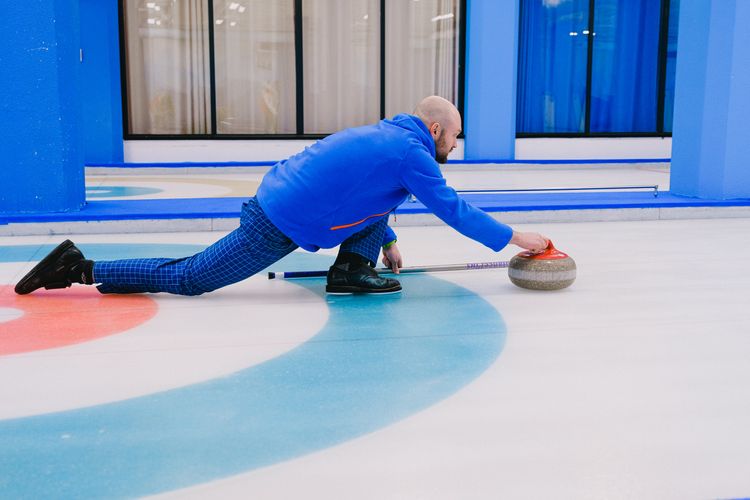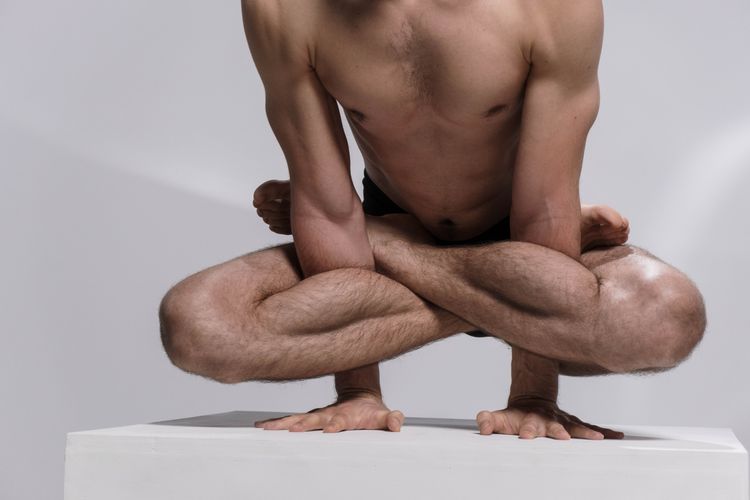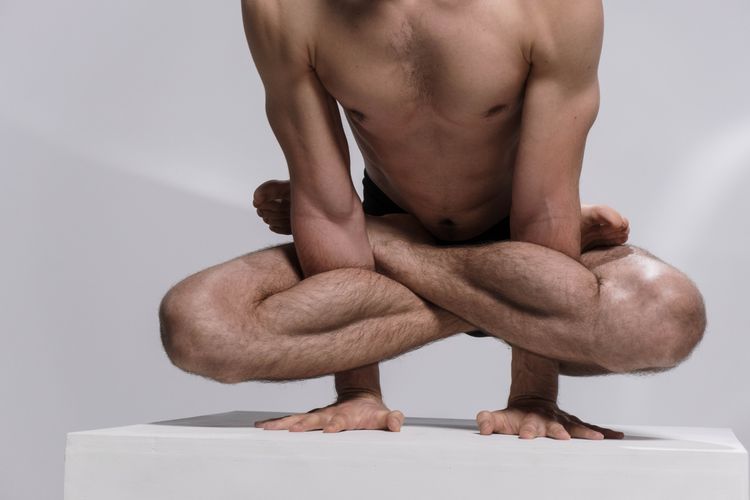PT Crab #27 Blue Crab Edition - Talk Therapy for Knee Pain and How Much Exercise Would a Neck Exercise Exercise If A Neck Exercise Could Exercise Necks?

Welcome to 2021, where everything is perfect and the world is a much better…. Yea, things are about the same, except we can’t all hit the gyms en masse like we usually would. That’s okay though, cuz exercising outdoor is better anyway! So do that. In PT Crab this week, things are also the same as always. Two studies, a summary of the research, and joy and goodwill to all.
This week, we’re covering a better approach to knee OA and the affect of exercise dosage on neck pain and disability. It’s a meta-analysis! Which is something. Premium, King Crab subscribers got two more, one on the plyometrics for CP rehab (with great news and data) and another about KTape for postural correction. Most of our taping, Pedes, and Acute content goes over there in the King Edition. That edition is magically still on sale, so that’s one good thing about 2021 already. Just $45 for the year, a 30% savings. Hit that up at PTCrab.org/subcribe.
Now, without further ado, let’s get into the first edition of 2021.
Talk Therapy for Knee Pain. Sort of.
The Gist - Researchers publishing in the Journal of Physiotherapy wanted to see how Australian PTs were treating people with knee OA and if those treatments aligned with the national Clinical Care Standard. We don’t care so much about the second part, but the first is quite interesting. They found that PTs “focused on biomedical assessment with little psychosocial consideration,” focusing on the mechanical aspects of OA. They mostly say themselves as providing goal-oriented, personalized, episodic care. That’s good, but not the best that we can do.
Researchers note that a biopsychosocial approach has been shown to improve patient outcomes and patient satisfaction. Other research has shown that when patients believe their joint is degraded due to wear and tear, they are more likely to believe that PT will increase pain. Since these PTs were mostly focusing on the mechanical aspects of the joint and not correctly describing the pathogenesis of OA (it’s “a whole-joint disease resulting from an imbalance between breakdown and repair of joint tissues”), the researchers argue that they’re not best preparing their patients for success. I know that these are Australians and they may do things a bit differently because they’re upside-down, but consider a more BPS approach to improve adherence and outcomes.
Tell Me More - The paper has fantastic quotes from the PTs they interviewed, categorized thematically. They sound remarkably boilerplate, like this bit from ‘Steve’: “This is partly due to the wear and tear, so it’s aging like your hair, like your nails; your joints do age.” And Steve’s not wrong, but the quote really gets at the heart of what the researchers are saying about the BPS approach and language choice. Steve’s sentence doesn’t give the patient much agency in changing the disease, he’s implying that it must be accepted as a part of aging.
The study refers to Australian Clinical Care Standards, but the APTA Clinical Practice Guidelines for OA are remarkably similar and are actually Australian! They were written by the Royal Australian College of General Practitioners and are a ridiculous 82 pages long. Even I didn’t read the whole thing. They do have some summaries though and you can check it out here if you’re an APTA member.(And here if you’re not, like 70% of PTs). On the biopsychosocial side, they do recommend cognitive behavioral therapy (out of our scope of practice, but still important), holistic assessment that includes health beliefs, psychological factors, attitudes to activity and exercise, and more. This is a good opportunity to look at the CPG summaries, or the whole 82 pages if you’re crazy and assess how to align your practice better with them. In this one case, don’t be like the Australians, get ahead and follow the best approach.
I’d prefer to read the Aussie paper anyway, I want some quotes. Then you can have them. But no one’s putting any shrimp on the barbie, unfortunately. They’re all here. You’ll have to provide your own accent.
How Much Neck Exercise Should You Assign? We Don’t Know. But It Does Help.
The Gist - These researchers wanted to see if exercise therapy was beneficial for neck pain at all and, secondarily, how much was the right amount. They grabbed a bunch of RCTs, broke down their exercise time into total minutes over the duration of care, judged the quality of their evidence, then popped them all into a meta-analysis. Overall, they grabbed 14 studies with a total of 1708 participants and assessed 13 of them for pain relief. Exercise duration ranged from 2-90 minutes at a time and frequency from 3-7 days per week. Overall, they got 21 exercise groups out of the 13 trials and dug into them with stats.
At short and long-term followups, there was low quality evidence that exercise produced “medium, clinically-meaningful” improvements in pain intensity over non-exercise (usually a 1.5 on the 0-10 scale). For disability, exercise produced clinically meaningful change as well, an average of -3.6 disability points on the Neck Disability Index. But wait, what does low quality evidence mean? Find out in your stats tip of the month below.
Tell Me More - The top-line of the study is that, regardless of dosage, exercise therapy is superior to control for improving pain and disability in people with neck pain. Hooray! Unfortunately, because of the heterogeneity of the studies involved, the researchers couldn’t land on a specific amount of exercise that people should do but I’m not super surprised. They weren’t controlling for exercise type either, so it’d be awful tough to recommend exactly what to do based on this meta-analysis. Their included studies (check out the references, always a goldmine for more data) have individual recommendations on how much to do and what type, so that’s where to go for more.
There are some serious limitations, but none that should lead one to believe that the study results are incorrect. The researchers note that publication bias could be a program, as they only searched for articles in English, they may have missed trials in their search as they didn’t go into the references of the trials they used, and some studies had a high risk of bias. Overall, there was enough data and it was strong enough to show that exercise does indeed help, but not enough that was strong enough to give us particulars. It’s always good to be extra-wary of research that confirms our own preconceptions, but this one seems thorough enough to be taken on its face.
Where is its face? I wanna see. That’s not really what the saying means, but whatever. Here it is.
Stats Tip of the Month - What is Quality of Evidence?
;tldr:A grading scale based on specific criteria that predict if the evidence is biased by low significance, inconsistency, or bad blinding in an RCT.
Full deets - This one should be obvious, based on the name, but it really is not. Quality of evidence is a very specific method of measurement used in systematic reviews, based (in this case) on the GRADE system. You’d think, because it’s in all caps and whatnot, that GRADE would stand for something, but no, the creators of the system just like to yell at you. In GRADE, an RCT starts as high quality evidence, but then can get worse and worse if it doesn’t pass the test (kinda like how the SAT punished you for guessing. Those dicks. GRADE assesses:
- Risk of bias in the study (bad blinding and such)
- Inconsistency of results between studies
- Indirectness of evidence (like the authors did a trial in 80 year olds, then said it’s applicable to 50 year olds. As if?!)
- Imprecision (this is the lack of statistically significant results or lack of clinical importance, which people try to cover up in studies all the time by not mentioning them and we talked about in PT Crab a few weeks ago. Those lying liars)
- Publication bias. If all papers about a topic show a positive effect, then publication bias is probably happening, since we don’t publish unwanted results. Basically, scientific journals were Instagram way before Instagram existed. They only show the positives.
Now that I see the criteria spell out RIIIP, I guess GRADE makes sense? There’s a bit more to it, but that’s enough to understand it in general.
That’s all we’ve got for this week. Please share (as always), in person or with your referral link to earn free swag and perks while helping us grow.
Bye!






Comments
Want to leave a comment and discuss this with your fellow PTs? Join PT Crab and get summarized PT research in your inbox, every week.